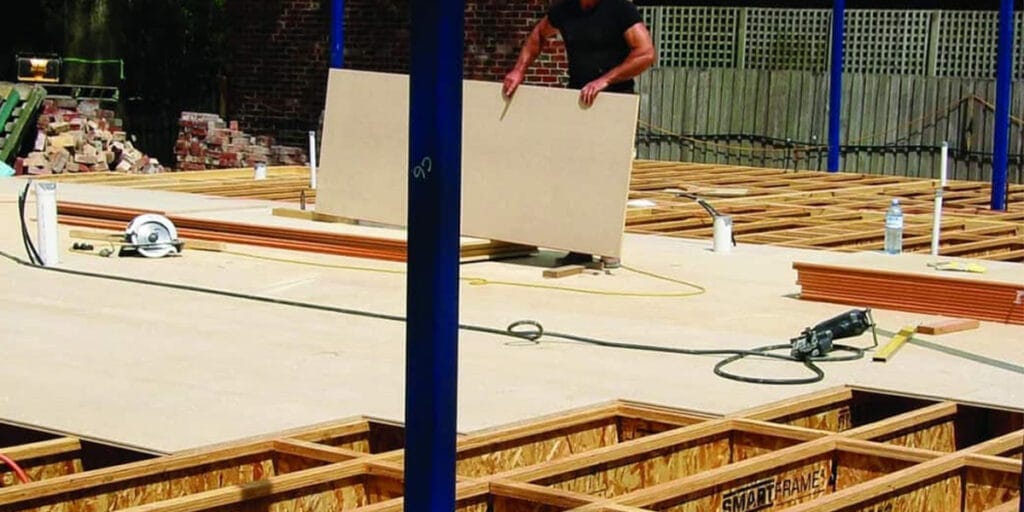
03 May MgO Board vs Gypsum Board: Which Lasts Longer?
Table of Contents
When evaluating mgo board vs gypsum board, they vary significantly in strength. Mgo boards are superior for environments with high moisture levels. They are robust and perform exceptionally well in wet or humid conditions. Additionally, mgo boards offer resistance to fire, mould, and damage, making them a durable and environmentally friendly option. Many builders in the U.S. are increasingly favouring mgo boards as they provide greater longevity and better value over time.
Key Takeaways
MgO boards are stronger than gypsum boards and last longer.
Use MgO boards in wet places as they resist water well.
Gypsum boards work in dry areas but break more easily over time.
MgO boards cost less in the long run as they need fewer repairs.
Pick the right board for your project to get the best results.
Durability Comparison
Lifespan of MgO board vs gypsum board
MgO boards last longer than gypsum boards. They are built to handle tough conditions. Their strength comes from resisting fire and water. Gypsum boards wear out faster, especially in wet places.
The table below shows how they differ in durability:
Property | MgO Board | Gypsum Board |
|---|---|---|
Fire Resistance | Very good | Average |
Moisture Resistance | Strong | Weak |
Mechanical Strength | Good bending and compressive strength | Lower strength |
Durability | Lasts long in all conditions | Short life in wet areas |
If you want a material that lasts, pick MgO boards. They need fewer repairs and save money over time.
Resistance to wear and tear
MgO boards are tough against daily damage. They stay smooth even in busy areas. Their strength makes them great for hard-use spaces. Gypsum boards, however, get dents and scratches easily. They are not ideal for places needing strong materials.
MgO boards also need less upkeep. They are sturdy and hold up well with regular use. This makes them a smart choice for homes and businesses.
Structural integrity over time
MgO boards stay strong for years. Gypsum boards can weaken or break in wet conditions. MgO boards remain firm and stable. Their lightweight yet strong design adds to their durability.
For homeowners and businesses, this is a wise investment. MgO boards also resist mould, which helps them last longer. Choosing MgO boards keeps your buildings safe and strong for many years.
Water Resistance Comparison
How much water they absorb
MgO boards take in very little water. This keeps them strong, even in wet places. They are perfect for bathrooms and kitchens with high humidity.
Gypsum boards are not good with water. They can swell or break down over time. If you need a water-resistant material, MgO boards are the better choice.
How they perform in wet areas
MgO boards work well in damp spaces. They stay strong even after being wet for a long time. This means fewer repairs and saves money over time.
Gypsum boards do not do well in wet places. They can weaken and are less reliable in damp areas. For basements or laundry rooms, MgO boards are a smarter pick.
Fighting mould and mildew
MgO boards stop mould and mildew from growing. Even in humid places, they stay clean and safe. This makes them great for areas with lots of moisture.
Gypsum boards are more likely to get mould and mildew. They do not handle moisture well, which can cause health problems and cost more to fix. Picking MgO boards keeps your space safer and cleaner.
Practical Applications

Best uses for MgO board
MgO board is strong and useful in many ways. It works well in factories for walls, roofs, and floors. Builders like it because it meets rules and is eco-friendly. At home, it is great for kitchens, bathrooms, and basements. It stops fires, controls moisture, and prevents mildew.
The table below shows where MgO board is used:
Application Area | Market Share | Key Benefits |
|---|---|---|
Industrial Buildings | Significant | Strong and reliable for walls, roofs, and floors. |
Construction | Largest | Meets building rules and supports eco-friendly practices. |
Residential | Stops fires, controls moisture, and prevents mildew in homes. | |
Emerging Economies | Lucrative | Growing cities and new buildings increase its demand. |
MgO board also fights fire, water, mould, and pests. It works well in tough places and areas with natural disasters.
Best uses for gypsum board
Gypsum board is good for simple, dry spaces. It is perfect for walls and ceilings in offices, living rooms, and bedrooms. It should not be used in wet places.
One big plus is how easy it is to install. For example, the Cement Board Stucco System saves time and adds strength. It also protects against weather. But gypsum board is not always the best for outside walls. It can cost more than other methods at first.
Gypsum board is handy and cheap but does not last in wet areas. Avoid using it in basements, bathrooms, or damp rooms.
Picking the right material for your project
Choose MgO or gypsum board based on your project needs. First, check your plans, budget, and timeline. Think about the environment and what the material must handle.
For wet or damp places, MgO board is better. It lasts longer and resists water and mould. For dry and low-use areas, gypsum board is a cheaper option.
Think about fire safety, moisture control, and strength. Plan carefully and keep checking your work to make sure it succeeds.
When you need strong and water-resistant materials, MgO boards are the best pick. They stay tough even after getting wet many times. For instance, tests show MgO boards barely lose strength after 25 wet-dry cycles. Gypsum boards, on the other hand, lose 36–52% of their strength.
Material Type | Wet-Dry Cycles | Strength Loss |
|---|---|---|
MgO Boards | 25 | Very little |
OSB | 25 | 40% |
Plywood | 25 | 9% |
Gypsum | 25 | 36–52% |
Gypsum boards are still useful in dry places where saving money matters.
More people are choosing MgO boards for tough conditions.
By 2032, their use is expected to double because they are eco-friendly and resist moisture.
Pick the right material based on your project’s needs and budget. If you want something that lasts, MgO boards are a smart choice.
FAQ
What makes MgO board different from gypsum board?
MgO board is stronger, resists water, and handles fire better. Gypsum board is weaker and not good in wet areas. MgO board works well in tough places, while gypsum board is best for dry spaces.
Can MgO board be used outside?
Yes, MgO board is great for outdoor use. It resists water, mould, and weather, making it good for walls and roofs. It performs better than gypsum board outdoors.
Is MgO board more costly than gypsum board?
MgO board costs more at first. But it lasts longer and needs less fixing, saving money over time. Gypsum board is cheaper but may need more repairs in tough conditions.
How does MgO board stop mould and mildew?
MgO board takes in very little water. This stops mould and mildew from growing. It is perfect for damp places like bathrooms and basements.
Which board is simpler to install?
Gypsum board is lighter and easier to cut, so it’s simpler to install. MgO board is heavier but lasts longer, making the extra effort worth it.
